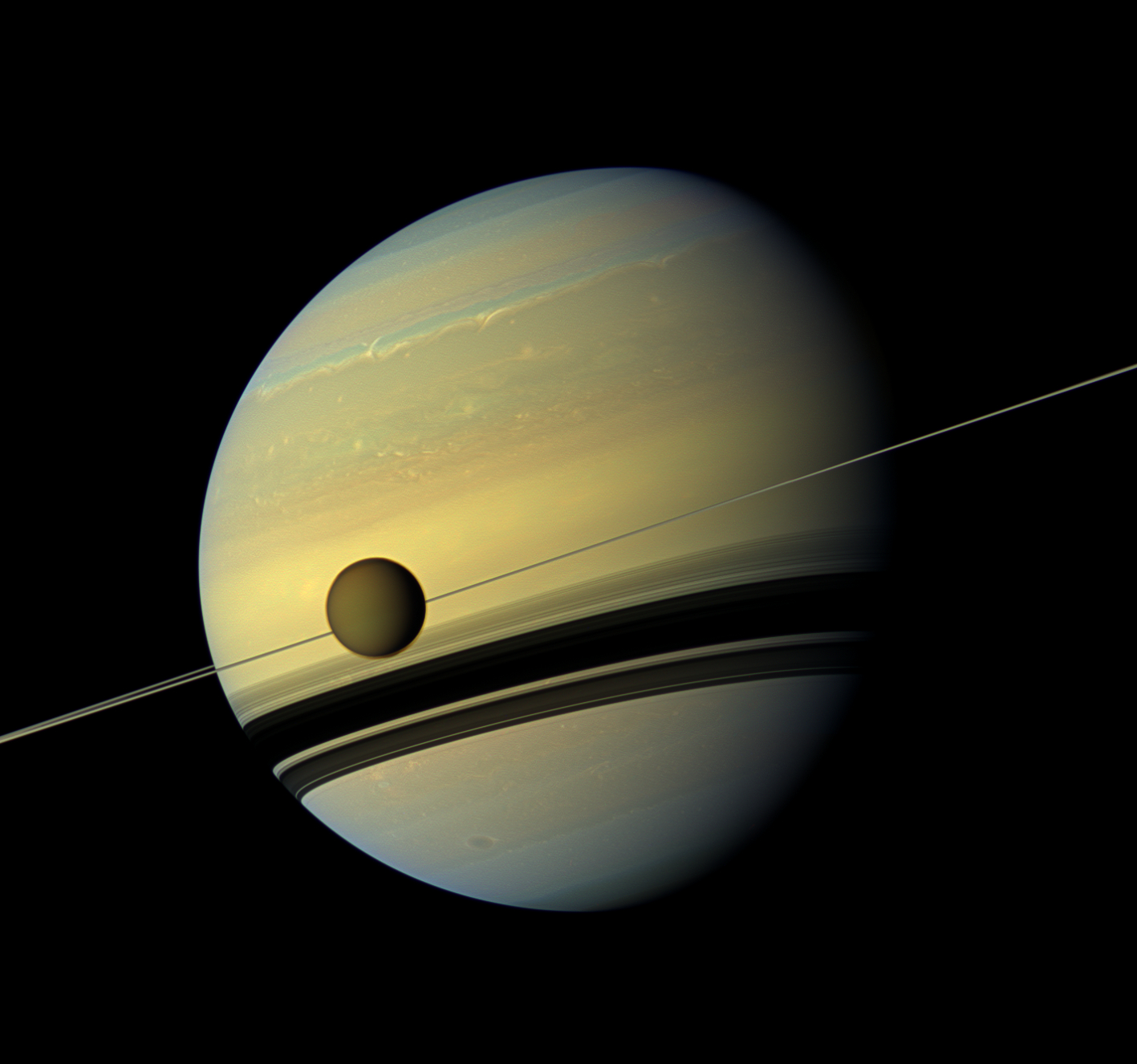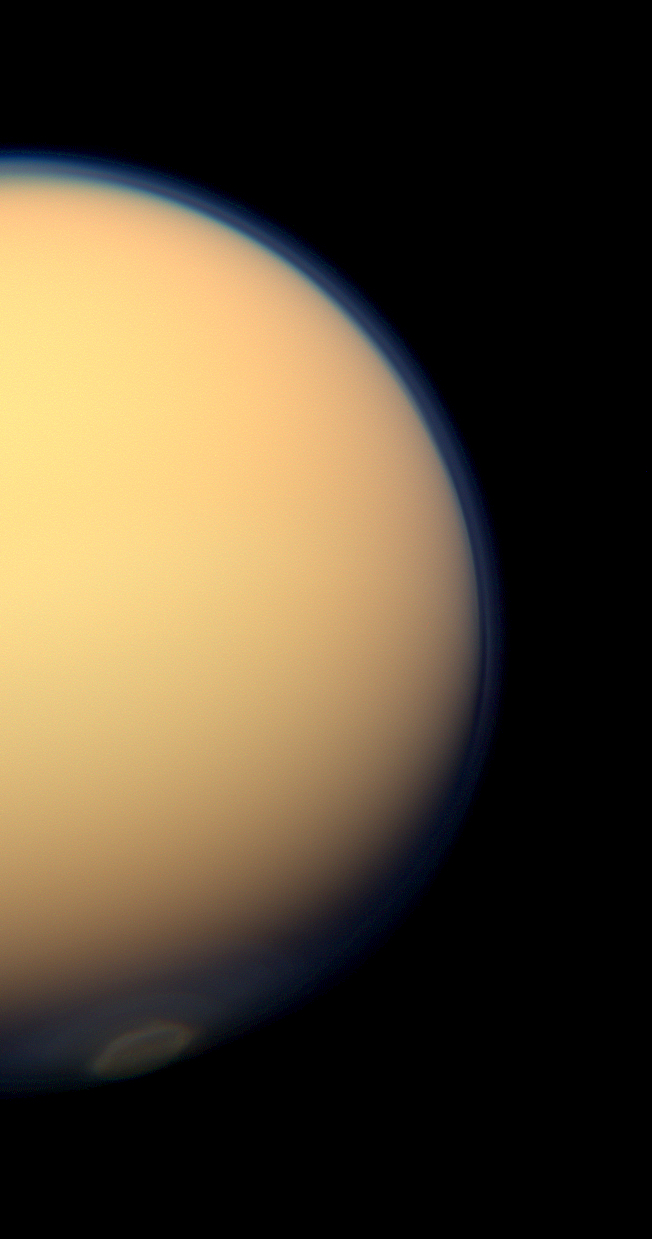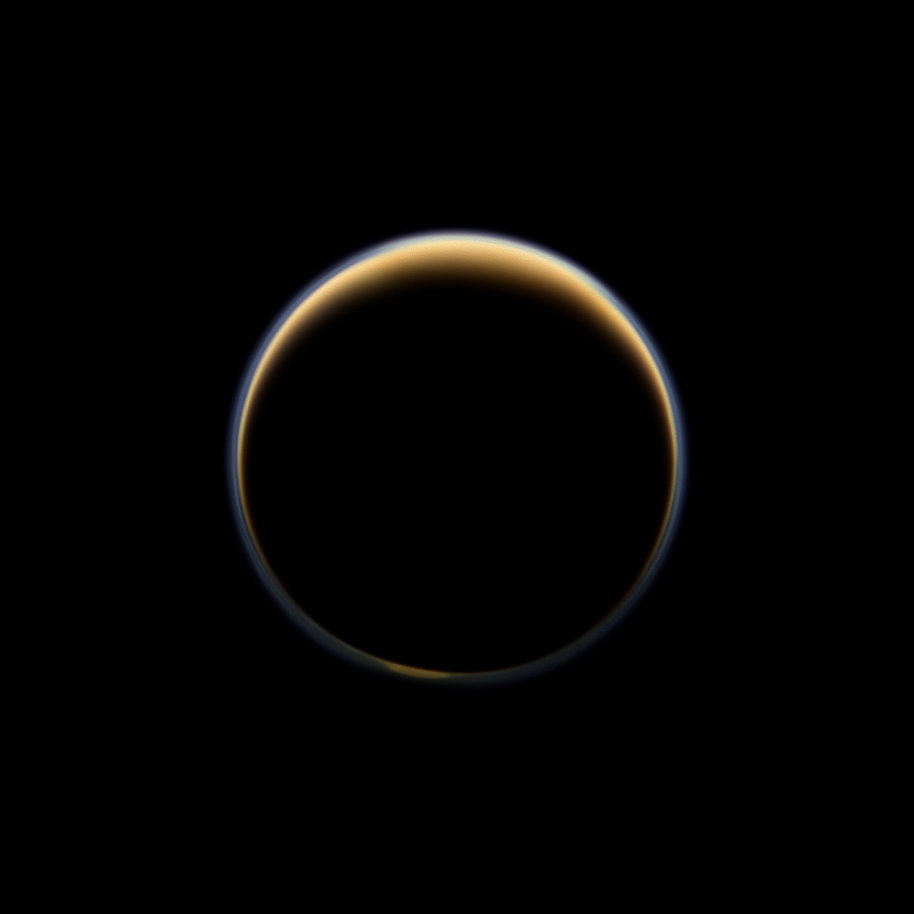Spectacular Photos of Saturn and Titan Captured by NASA Spacecraft

NASA's Cassini probe has beamed home stunning images of Saturn and Titan, the ringed planet's largest moon.
The new natural-color Cassini photos, which were unveiled Wednesday (Aug. 29), capture the Saturn system as it undergoes a seasonal shift. The ringed planet and its many moons look quite different today than they did when Cassini arrived on the scene eight years ago, researchers said.
"As the seasons have advanced, and spring has come to the north and autumn to the south throughout the Saturn system, the azure blue in the northern winter Saturnian hemisphere that greeted Cassini upon its arrival in 2004 is now fading; and it is now the southern hemisphere, in its approach to winter, that is taking on a bluish hue," Cassini imaging team leader Carolyn Porco, of the Space Science Institute in Boulder, Colo., said in a statement.
"This change is likely due to the reduced intensity of ultraviolet light and the haze it produces in the hemisphere approaching winter, and the increasing intensity of ultraviolet light and haze production in the hemisphere approaching summer," Porco added. [More Spectacular Photos of Saturn by Cassini]

One of the photos showcases Saturn, its rings and Titan, which at 3,200 miles (5,150 kilometers) wide is larger than the planet Mercury. The edge-on ring system forms a thin line directly behind the huge moon while its shadow projects a series of dark bands onto the planet's southern half.
Another photo shows Titan's south polar vortex — an odd mass of swirling gas that Cassini noticed earlier this year — in clear and dramatic detail. The formation of the vortex is likely related to the seasonal changes occurring on Saturn, Titan and its other moons, scientists have said.
The last photo shows a circle of light around Titan, making the haze-shrouded moon look like a dazzling ring floating in the blackness of space. The effect is created by sunlight scattering through the periphery of Titan's thick, nitrogen-dominated atmosphere, researchers said.
Get the Space.com Newsletter
Breaking space news, the latest updates on rocket launches, skywatching events and more!

Cassini launched in 1997 and has been studying Saturn and its rings and moons since it arrived in orbit around the planet in 2004. Cassini's primary mission ended in 2008, but the probe's activities have been extended twice, most recently through 2017.
NASA, the European Space Agency and the Italian Space Agency have worked together on the mission over the years.
Follow SPACE.com for the latest in space science and exploration news on Twitter @Spacedotcom and on Facebook.
Join our Space Forums to keep talking space on the latest missions, night sky and more! And if you have a news tip, correction or comment, let us know at: community@space.com.

Space.com is the premier source of space exploration, innovation and astronomy news, chronicling (and celebrating) humanity's ongoing expansion across the final frontier. Originally founded in 1999, Space.com is, and always has been, the passion of writers and editors who are space fans and also trained journalists. Our current news team consists of Editor-in-Chief Tariq Malik; Editor Hanneke Weitering, Senior Space Writer Mike Wall; Senior Writer Meghan Bartels; Senior Writer Chelsea Gohd, Senior Writer Tereza Pultarova and Staff Writer Alexander Cox, focusing on e-commerce. Senior Producer Steve Spaleta oversees our space videos, with Diana Whitcroft as our Social Media Editor.









